Kashmir: the eternal war of North-West India
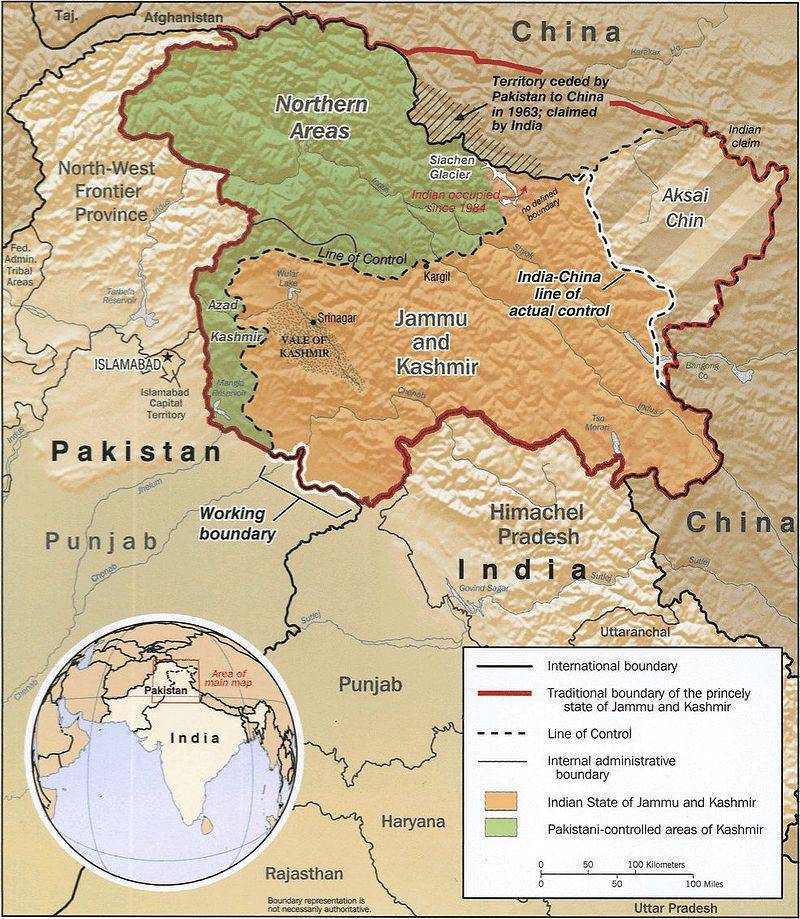
Jammu and Kashmir - an ancient beautiful land, from time immemorial has been a bridge between India, China and the Iranian-Muslim world. From ancient times, cities with a highly developed culture existed here and, until recently, it was possible to coexist relatively peacefully with followers of several religions - Muslims, Hindus, Buddhists. Of course, contradictions and wars, including those based on religion, took place throughout stories Kashmir, but the nature of the global confrontation they took only after the liberation of India from British colonial rule.
In many ways here, of course, the colonialists tried to draw artificial borders for two postcolonial states - India and Pakistan. It is the British who bear the lion's share of responsibility for the continuing geopolitical confrontation between India and Pakistan, in which, above all, the Western world is interested. For the United States and Great Britain, an independent strong India poses a significant threat, so from the very beginning it was decided, first, to divide it into two states (then a third, Bangladesh, was added), and second, to slay the states of Hindustan in ongoing opposition. One of the tools of this etching is the Kashmir conflict.
Before the independence of India and Pakistan was proclaimed, the Muslim population of the principality of Jammu and Kashmir got along well with the Hindu maharajas and the neighboring Muslim rulers did not express any particular claims about this. Recall that in Jammu and Kashmir, Hindus inhabit the southern territory - these are mainly Indo-Aryan peoples.
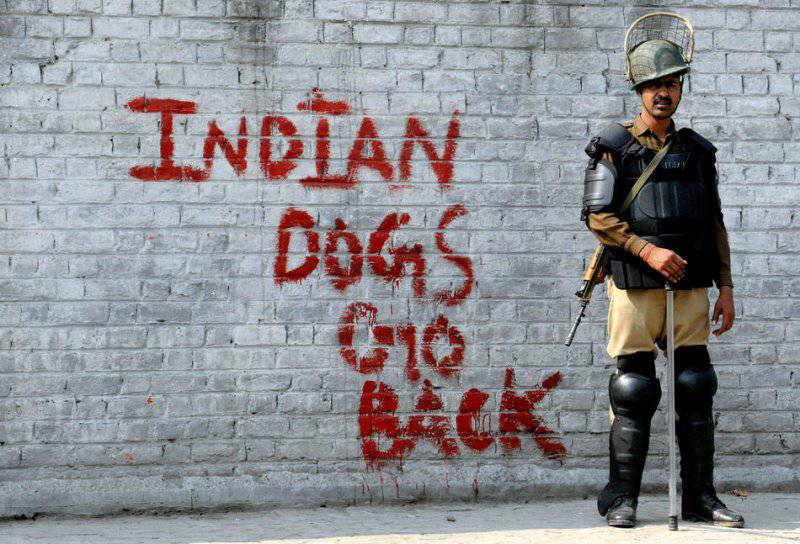
A soldier patrols during a curfew on a deserted street. Behind him on the wall is the inscription: "Indian dogs, go home"
Muslims are concentrated in the north and include not only Indian nationalities, but also Pashtuns, the Tibeto-Burmese people of the Balts and the unique Burishi people, speaking in an isolated language of Burushaski, scientists of the entire planet still puzzle over the mystery of their origin and kinship. In addition to Hindus and Muslims, there is also a fairly large Buddhist community in Jammu and Kashmir, represented primarily by the Tibetan-speaking population of the former principalities of Ladakh and Zaskar. Ladakh has historically been a Tibetan and, for obvious reasons, is a zone of heightened interest from neighboring China.
In the modern Indian state of Jammu and Kashmir, the ethno-confessional situation is as follows: the majority of the population (67%) are Muslim, 30% is Hinduism, 2% is Sikhism, and 1% is Buddhism. At the same time there are strong differences between individual territories of the state. So, in the northern part - Kashmir - Muslims make up 97% of the population. In the south of the state - in Jammu, on the contrary, 65% of the population are Hindus, Muslims only 31%, Sikhs - 4%. In Ladakh, 46% are Buddhists. That is, we see that the ethno-confessional alignment in the state is characterized by uneven distribution of ethnic and confessional groups over its territory, but at the same time there is an obvious predominance in the number of the Muslim population.
As for the ethnic picture, the population of Kashmir is represented by the following groups: 1) Dardian peoples, intermediate between Indian and Iranian - Kashmiris, Shin, Kalash and other ethnic groups. 92% of Kashmiris are Muslim, the rest are Hindu; 2) Indo-Aryan peoples - Punjabis, Dogra, Hindustans and other ethnic groups, mostly inhabiting the southern part of the state and practicing Hinduism, Sikhism or Islam; 3) Tibeto-Burmese peoples - Ladakhi, Balts, Tibetans - inhabit the northeastern part of the state and practice mainly Lamaist Buddhism, as well as the Tibetan Bon religion (except for the Balts, which are almost the only Tibetan-Burmese people professing Islam of Shiite ); 4) Burushas who speak Burushaski and inhabit the Hunza region, currently controlled by Pakistan. This nation also professes Islam; 5) Pashtuns (Afghans) belonging to the Iranian peoples and maintaining close ties with fellow tribesmen in Pakistan and Afghanistan.
Maharaja Jammu and Kashmir were dogmas. Dogra raise their kind to the people of Rajputana (modern state of Rajasthan), are proud of their military exploits and for the most part retain the Hindu religion, although a small part of the dogra also professes Sikhism and Islam. Formally, the composition of their state with the ruling Sikh dynasty, which the other Sikhs viewed as traitors to Sikhism, included the lands of Jammu and Kashmir proper, as well as the Buddhist principalities of Ladakh and Zaskar and the Emirates of Hunza, Gilgit and Nagar. Currently, Gilgit-Baltistan and Hunza are controlled by Pakistan. The British authorities, in exchange for loyalty, allowed the Maharajs of Jammu and Kashmir to preserve their throne and did not particularly interfere in the internal affairs of this region.
When India and Pakistan were partitioned in 1947, Maharaja Jammu and Kashmir Hari Singh, who sought to maintain his sole authority in the territory under his control, did not wish to become part of any of the newly formed states. However, the Muslims, dissatisfied with this decision and not seeking to continue to remain under the Hindu rule, especially since their fellow tribesmen were part of their own sovereign Muslim state, raised an armed uprising. Maharaj had no choice but to seek help from India. So the territory of Jammu and Kashmir became part of the Indian state, while the heir of Hari Singh Karan Singh, who holds the post of state governor, is still formally the Maharajah of Jammu and Kashmir.
The Pashtun tribal militias of Afridians and Yusufzais, tribes living in the border areas of Pakistan and distinguished by great militancy and zealous attitude to religion, came to the aid of the Muslim population of the state. After the Indian army managed to repel their attacks, the Pakistani armed forces intervened. Thus began the First Indo-Pakistani War, which lasted from October 21 1947 to January 1 1949. and ending with the division of Jammu and Kashmir territory between India and Pakistan. Approximately 60% of the territory of the principality was part of India, while the rest of the northern part, inhabited by Muslims, was ceded in fact to Pakistan.
Since then, the Indo-Pakistani conflict around Kashmir has been going on almost continuously. For about seventy years, two neighboring states cannot solve the problem of the borders between them. During this time, three more Indo-Pakistani wars followed - Second - in August-September 1965 of the year, Third - in December 1971 of the year, Kargilskaya - in 1999 of the year, as well as countless minor armed conflicts. Both India and Pakistan are compelled to keep significant armed forces in the region, to invest huge amounts of money in improving the armament and equipment of army and police units.
In addition to using its own armed forces, Pakistan is actively sponsoring Muslim radical organizations based in the Kashmir region under its control and conducting terrorist attacks against Indian government forces. The territory of Pakistan’s Kashmir over the past decades has actually become the base of international terrorist organizations that use hard-to-reach mountain areas as an excellent shelter for their training camps. These organizations actually control the Pakistani Kashmir, establishing their own rules on its territory and preventing not only Indians from entering the region, but also any non-Muslim foreigners.
The provinces of North and Azad Kashmir are formed in the territory of Kashmir under the control of Pakistan, while the Indian territory is part of the state of Jammu and Kashmir. In addition, approximately 10% of the territory of Kashmir in 1962 was occupied by Chinese troops and so far this territory, called Aksai Chin, is part of the PRC, as well as part of the Trans-Karakorum highway, attached to China in 1963, with the consent of the Pakistani side .
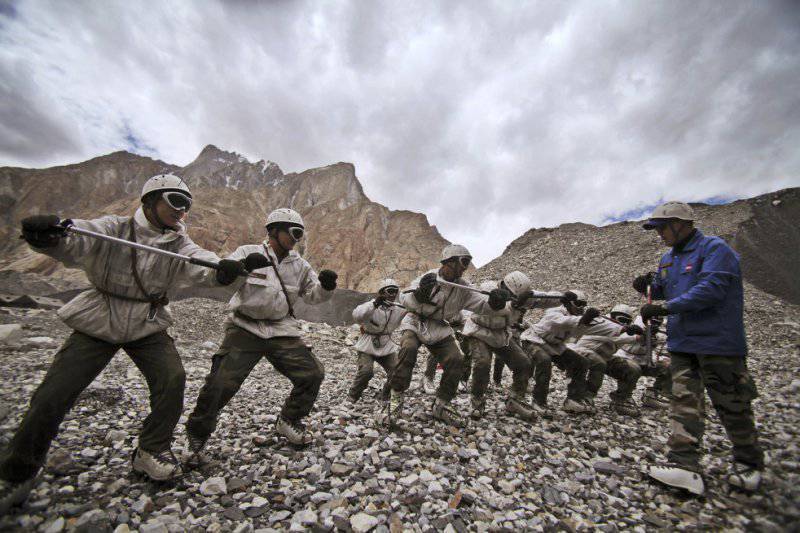
Soldiers of the Indian army during exercises near the India-Pakistan border in the disputed territory of Indian Kashmir
However, the division of the territory of the former principality between India, Pakistan and the PRC did not mean the termination of armed conflicts in the region. Muslim organizations based in Pakistan’s Kashmir do not intend to accept the fact that a significant part of their co-religionists remains in the Indian state of Jammu and Kashmir - including in the Kashmir valley region, where Muslims make up about 97% of the population.
Naturally, the state of Jammu and Kashmir has become a permanent target of terrorist attacks. A large Indian military contingent is based on the territory of the state, designed to secure the region from the possible risk of a Pakistani or Chinese invasion. In 1990, in the state of Jammu and Kashmir, in view of the constant threat of terrorist attacks from radical organizations, twenty Indian divisions were stationed.
They are opposed by militants of radical organizations, whose total number is also estimated at thousands of people. Moreover, if you follow Indian sources, in recent years there has been a decline in the proportion of Kashmir Muslims themselves in the ranks of radical organizations - they are replaced by immigrants from neighboring Pakistan and Afghanistan, the retreating Taliban, as well as Uygur separatists from neighboring China and radicals from the former Soviet Central Asian republics. All this multinational public finds its refuge in training camps in the territory of Pakistan’s Kashmir.
The danger of radicalization of Indian Muslims is aggravated by the fact that in social terms Muslims are significantly inferior to Hindus. As a rule, representatives of the Muslim community are less educated, among them fewer entrepreneurs and intellectuals. This is due, among other things, to the fact that representatives of the lower castes initially converted to Islam, thereby striving to break out of the caste system. After the formation of sovereign Pakistan, a significant part of Muslims, primarily from the upper strata of society, left India, preferring to make a career in their own Muslim state. Only the less well-to-do and less educated representatives of the urban lower classes stayed in India, and in the case of Kashmir there are representatives of the local indigenous ethnic groups, who are also predominantly engaged in traditional economic areas.
That is, radical Islamic organizations in India have quite ample opportunities in terms of replenishing and renewing human resources, primarily due to unemployed youth. Anti-American rhetoric, actively used by radical Islamic organizations, also contributes to their credibility. The role of Pakistan, Saudi Arabia and other Muslim states, which provide financial and organizational assistance to Indian Muslim organizations, is also important.
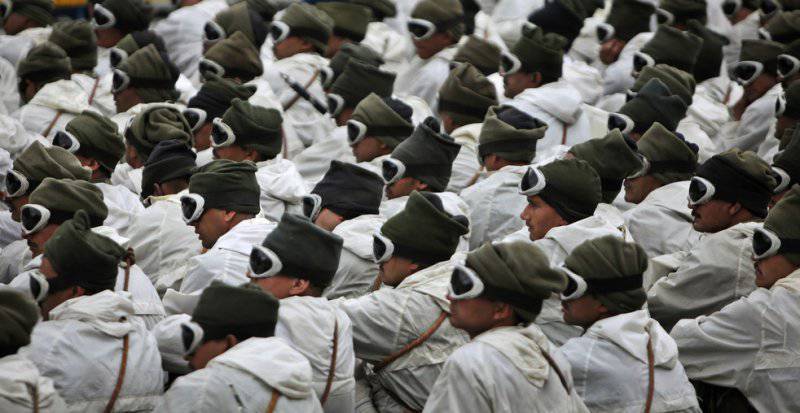
The huge cash outflow to support the troops in this region forced India and Pakistan to open a dialogue for peaceful disengagement along Siachen, without prejudice to the loss of territory on both sides.
Currently, the key actors in the military-political situation in Kashmir are the following religious and political organizations:
1. Jamiat ul-ulama-islam - Society of Islamic Theologians. It is this Pakistani organization that recruits and trains militants for Kashmiri militias.
2. Lashkar i-Jhangvi is the Jhangvi Army, the second-largest religious and political organization that recruits and trains militants for armed groups and directly directs the latter.
3. Hizb and Mujahidin - Party of Fighters for the Faith. Is one of the most radical Islamic organizations in the region, advocating the independence of Kashmir.
It should be noted that all of these organizations belong to the radical wing of Orthodox Sunni Islam. This is explained by the fact that it is the Sunnis in the modern world that represent the most active Islamic force. Pakistan and the Afghan Taliban are supporting Sunni organizations specifically. However, a significant number of Shiite Muslims live in Kashmir, above all, the Ismailis. For the radical Sunnis, they are the second ideological enemies after the Hindus and Buddhists, it is envisaged either to turn them to Sunni, or to “purify” the future Islamic Kashmir from the Ismailis.
Ismaili positions are strong in mountainous areas, especially among small ethnic groups such as the Balts and the Burishas. The Ismailis consider Imam Aga Khan IV as their head. This spiritual leader of the Ismaili communities of India, Pakistan, Afghanistan, Tajikistan and other countries resides in the UK, but enjoys great influence in the region. We can assume that due to deep ties with the British crown, the Ismaili imam is also the most important conductor of English influence in North-West India. After all, Aga Khan is not only living and doing business in the UK, he himself is half (by mother) an Englishman. Naturally, solving the Kashmir problem is impossible without taking into account the interests of the Ismaili community, which is also not satisfied with the growing influence of Orthodox Sunni organizations that threaten the very existence of Shiite Islam in North-West India.
Indo-Pakistani conflicts and rebel attacks by the beginning of the XXI century claimed the lives of at least 30 thousands of servicemen and civilians. Pakistani sources claim that the number of Muslims killed in the fighting is much higher and reaches 70 thousand people. In fact, Jammu and Kashmir is a stagnant hot spot, the escalation of violence in which far surpasses other troubled Indian states, including Northeast India, which also has separatist armed organizations.
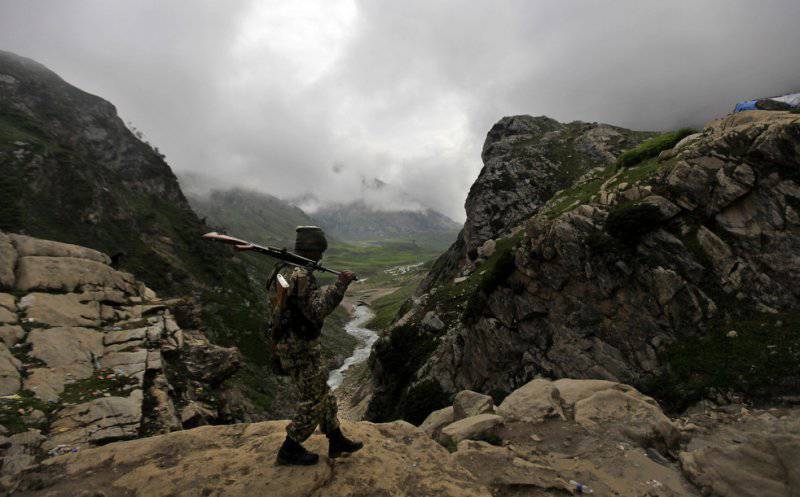
An Indian soldier from the top of the mountain keeps order at the site entrusted to him. Thousands of military and paramilitary police stationed along the pilgrims' route: from the 1990-ies in the state of Kashmir, the struggle with Muslim separatists continues
Since Kashmir Muslims actively support Pakistan and the Afghan Taliban, with weapons, propaganda literature, organizational support they have no problems. And this greatly complicates the effect of the actions of government troops and special services, which are unable to overcome armed resistance in Jammu and Kashmir. The situation is aggravated by the fact that India and Pakistan are nuclear powers, and in the event of an aggravation of the situation in the Kashmir region, the consequences, not only for these countries, but for all of humanity, may be the most unpredictable.
For India, Kashmir remains one of the primary problems, moreover, there is not at least some plausible hope for a solution to the situation in this region. There are two ways left for the Indian government - either to accept the territorial claims of Pakistan and get rid of the territory with the predominantly Muslim population, or to wage an ongoing war with radical organizations that are supported by the same Pakistan and, indirectly, by a large part of the Islamic world.
However, to cede the territory of Kashmir to Pakistan means not only to lose and lose the strategically important areas, but also to agree that Kashmir will even more become a hotbed of spreading religious extremism and terrorism in South Asia. Therefore, it is unlikely that the Indian government will ever grant sovereignty to Kashmir. And this means that the conflict in the region will continue to fester, largely with the external support of the states concerned.
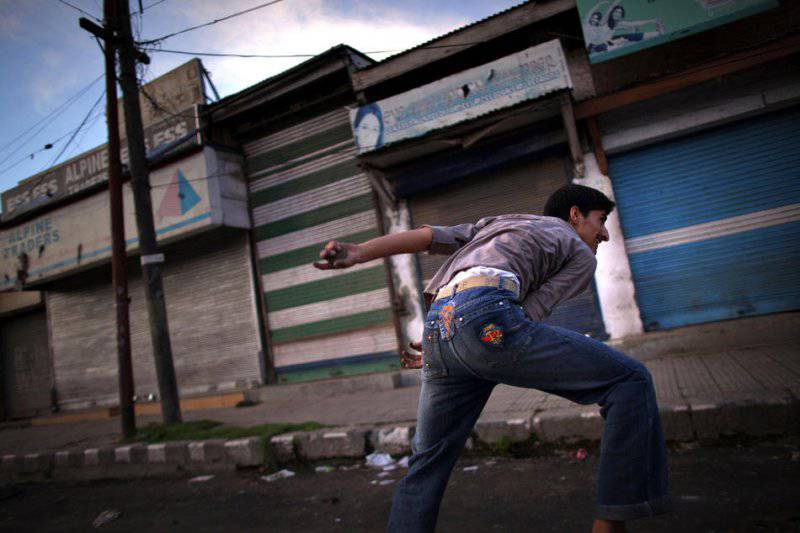
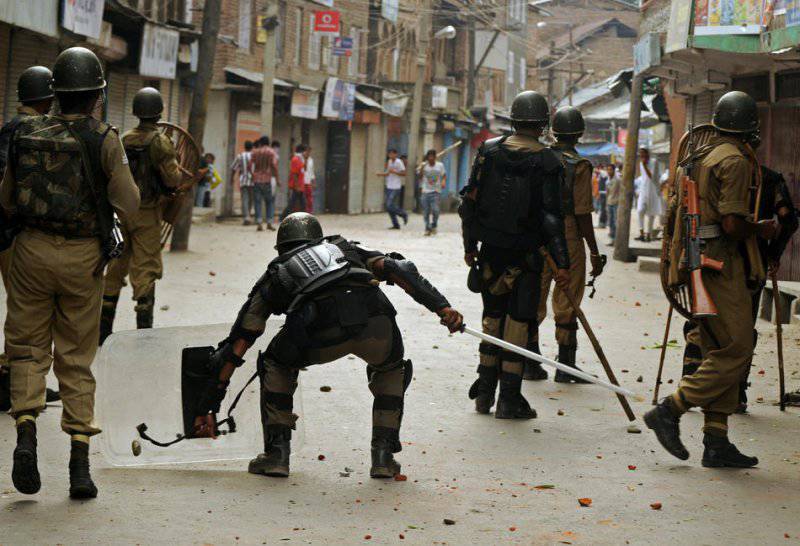
Information